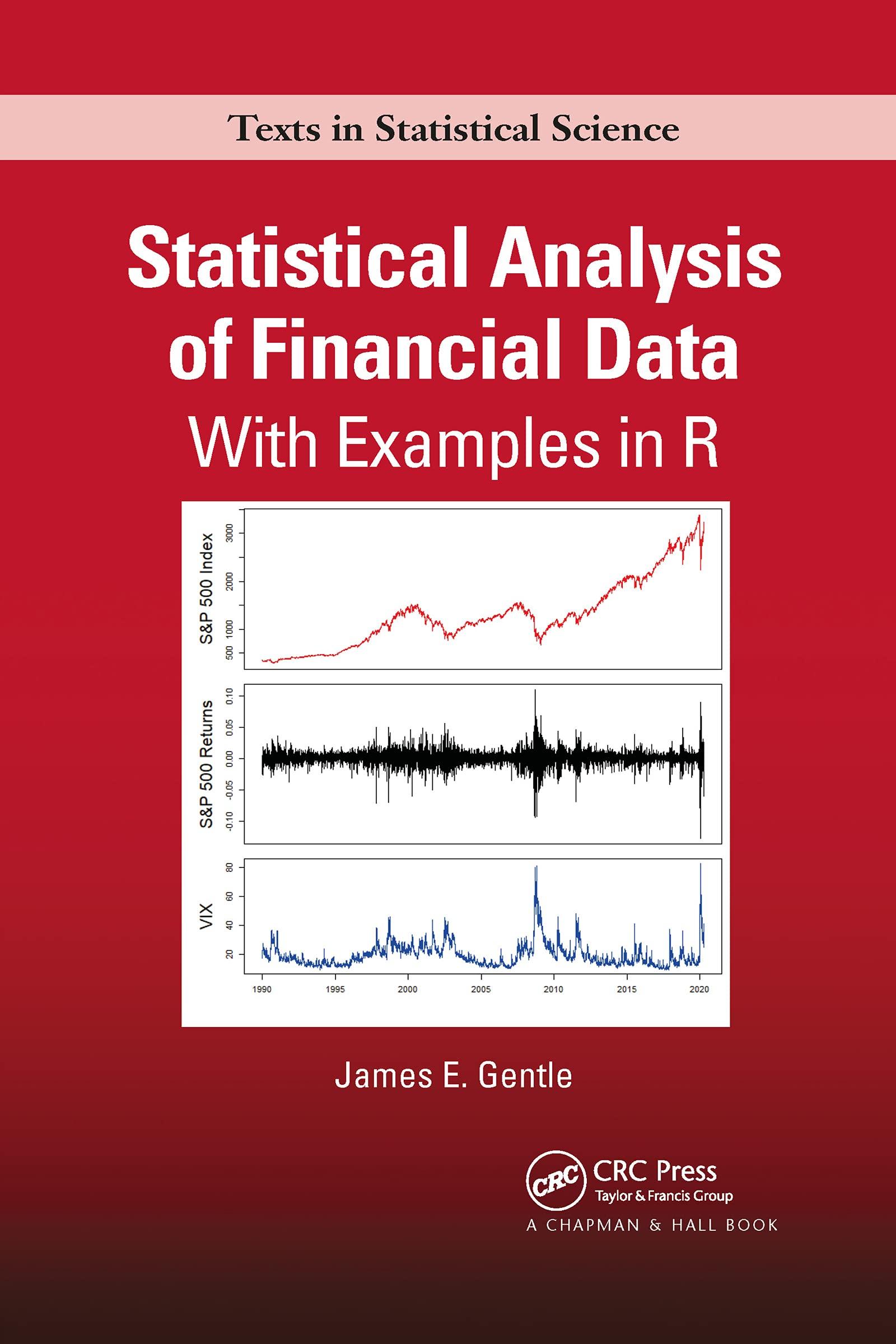Consider the daily prices of XYZ, as in Exercise 3.19, and assume the same location-scale (t) distribution
Question:
Consider the daily prices of XYZ, as in Exercise 3.19, and assume the same location-scale \(t\) distribution for the returns.
Generate 1,000 random sequences of 253 daily prices of XYZ, each starting at \(\$ 100\).
Before answering any of the following questions, read all questions so as to accumulate the appropriate quantities to answer these questions.
(a) Plot the first 5 sequences as time series on the same graph.
(b) Compute the mean and sample standard deviation of the prices at the end of the period.
(c) Suppose you owned a call option for XYZ at 103 for 251 days out on the beginning date in this scenario.
What percentage of the time would your option have been in the money on the date of expiration?
(d) What is the fair value of a European call option for XYZ at 103 for 251 days out on the beginning date in this scenario if the risk-free interest rate is \(1 \%\) ?
Compare this with the results of the binomial tree model used in Exercise 3.6d. How do you account for any differences?
(e) Consider again the question in Exercise 3.20d except now assume that the \(t\) distribution has 3 degrees of freedom and a scale of 0.010 . That is, suppose that the price of stock XYZ is \(\$ 100\), and that the daily log returns follow a location-scale \(t\) distribution with mean 0 , scale 0.010 , and degrees of freedom 3 , and assume that the daily \(\log\) returns are sequentially independent.
Using the Monte Carlo procedure as before, what is the fair value of a call option for XYZ at 103 for 251 days out on the beginning date in this scenario if the risk-free interest rate is \(1 \%\) ?
Data From Exercise 3.19:
Suppose the price of stock XYZ is \(\$ 100\). Suppose that the daily \(\log\) returns follow a location-scale t distribution with mean 0 , scale 0.002, and degrees of freedom 6 . Assume that the daily log returns are sequentially independent. (A large assumption!)
(a) Generate a random sequence of 253 daily log returns of XYZ. (This is approximately a year of trading days.)
Plot a histogram of the returns.
What is the standard deviation of the distribution of the daily log returns?
What is the observed standard deviation of your sample?
What is the statistical volatility of XYZ?
Data From Exercise 3.6d:
(d) What is the fair value of a European call option for XYZ at 103 for 251 days out on the beginning date in this scenario?
Step by Step Answer:





